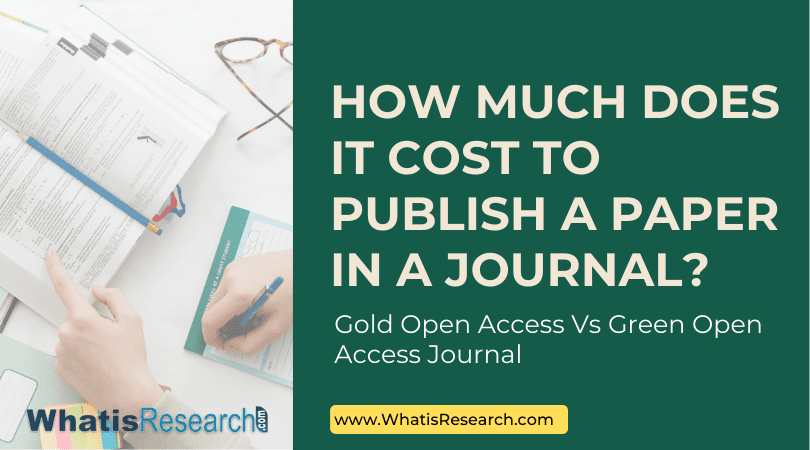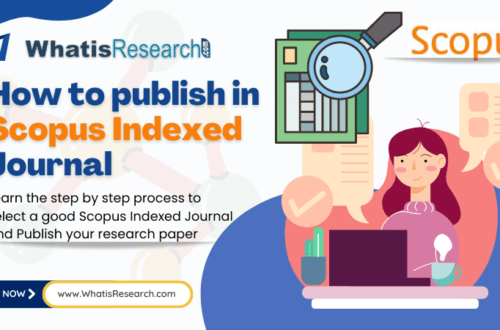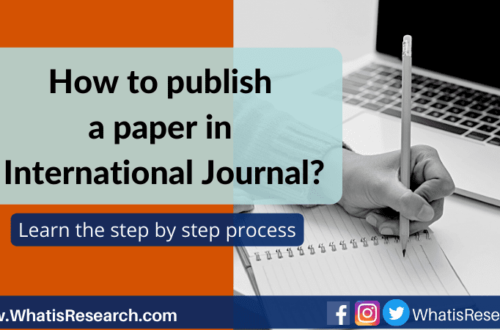PublishingState.com


Understanding Journal Publication Fees: A Compact Guide
Table of contents, introduction to journal publishing, traditional publishing model, open access publishing model, impact on journal publication fees, peer review and editorial services, system management and digital hosting, maintaining quality and integrity, detailed breakdown of typical journal publishing fees, why some publishers charge high journal publication fees to publish, understanding open access journal publication fees, the pros and cons of open access fees, tips for authors to afford publication costs, balance between journal publication fees and prestige, call-to-action.
As someone who works on academic publishing, I often get a popular question, especially from young and aspiring researchers:
How much do I pay for the journal publication fees to publish my paper in your journal?
The article discusses the cost of publishing in an academic journal, delving into journal publishing models, revenue generation methods of publishers, and why some publishers charge high journal publication fees that deter authors from submitting.

Academic journal publishing is an essential part of the scholarly communication process. Its primary purpose is disseminating research findings, ideas, and theories to the global community of scholars, researchers, and practitioners.
By publishing their work in academic journals, authors contribute to the existing body of knowledge in their respective fields, stimulate further research, and advance human understanding.
But this important endeavor comes with a cost.
A publisher running a scholarly journal needs to cover operation costs. These costs cover system maintenance (manuscript management system), archiving host, editorial services, editorial remuneration, salary, bills, etc. Institutional academic publishers may get (some) funding, whereas commercial publishers need to fork money to cover the overhead.
The total cost can vary significantly between journals and depending on the chosen publishing model. Where the journal publishing fees are concerned, this financial aspect of journal publishing can influence an author’s decision on where to submit their work.
When considering journal publication fees and cost, it’s crucial to understand its importance, purpose, and associated costs. These costs enable journals to maintain high editorial standards, manage the peer review process, and ensure the work’s accessibility to readers worldwide.
While these costs may sometimes seem high, they’re integral to ensuring the quality, integrity, and accessibility of published research. Therefore, it’s essential for authors to factor them into their publishing decisions.
Understanding Journal Publishing Models
Delving into the world of journal publishing, you’ll encounter two primary models: traditional and open access. Remember that we are probably talking about more than 30,000 academic journals worldwide.
Each journal model operates differently, and understanding these differences is key as they significantly impact the costs associated with publishing.
The traditional publishing model, which has existed for centuries, operates on a subscription-based system. In this setup, readers or their institutions pay a fee (subscription) to access the content of the journals. The subscription mechanism has been the primary publishing model, but the number continues declining as many have adopted the open access model.
The revenue from these subscriptions covers production costs, peer review management, and distribution. Authors may or may not be charged to publish in these types of journals, but even when they are, the fees are generally lower than those of open access journals.
On the other hand, the open access model is a more recent development in the realm of academic publishing. This model allows anyone to read and download the articles for free, promoting wider dissemination of research.
However, there is a catch.
The authors or their institutions typically bear the publishing costs under this model. These fees, known as Article Processing Charges (APCs), cover the same services as traditional publishing – editorial work, peer review management, and distribution. APCs can vary widely, with some journals charging hundreds of dollars while others may charge several thousand.
In between the traditional subscription and open access models, there is the hybrid model, in which a journal offers both options.
The choice between traditional and open access models fundamentally influences the cost of publishing. As mentioned earlier, traditional publishing often incurs fewer upfront costs for the authors as reader subscriptions primarily cover the expenses.
Open access, conversely, shifts the financial burden onto the authors, necessitating higher APCs. However, it’s important to note that the higher cost of open access publishing is offset by its benefit of wider accessibility and potential for greater citation rates.
Ultimately, the decision of where to publish—and thus how much to pay—lies in the hands of researchers and their institutions. It’s a balancing act between affordability, academic recognition, and the desire for research to reach as broad an audience as possible.
Who Do Publishers Incur Journal Publication Fees?
The cost of publishing a research paper often raises eyebrows, especially among first-time authors. You might ask, “Why do I have to pay to share my hard-earned knowledge with others?” The answer lies in the intricate process that your manuscript goes through before it gets published. This process involves several quality control steps, all meticulously managed by the journal.
The cornerstone of academic publishing is the peer review process. It ensures that the research being circulated is high quality, robust, and contributes to the existing body of knowledge. Organizing a thorough, unbiased peer review is no small task. Journals must engage experts in the relevant field, often multiple, and manage their feedback efficiently to maintain the integrity of the review process.
In addition to peer review, there are other editorial services like copy-editing, proofreading and typesetting. These processes help refine the language, correct errors, and format the manuscript as per the journal’s guidelines. The outcome is a polished, professional-looking article that reflects well on the author and the journal.
Beyond editorial work , journals also shoulder the responsibility of maintaining a stable digital platform for hosting published articles. This includes developing and updating the online submission system, managing the website, and ensuring 24/7 access to their digital archives. These technical aspects require significant ongoing investment.
Furthermore, journals must stay current with the latest advances in digital publishing. This means adopting new technologies, enhancing accessibility, and improving user experience, all involving additional costs.
All these processes collectively play a pivotal role in maintaining the quality and integrity of the published work. By paying the publishing fee, you’re essentially contributing to this meticulous system designed to uphold the highest standards of academic integrity. It’s an assurance that experts are scrutinizing your work, presented professionally, and hosted on a reliable platform.
While the cost may seem daunting initially, consider it an investment towards ensuring that your research reaches your community in the best possible manner. It’s about valuing the rigorous process that safeguards the reputation of scholarly research.
Decoding the Journal Publication Fee Structure
To understand why journal publication fees can be expensive, we need to break down the typical costs associated with it. It’s not just about printing on paper or hosting on a digital platform – several factors contribute to these fees.
Firstly, there is the cost of handling and processing the manuscript. This involves initial assessment, coordinating the peer review process, and editing the manuscript to meet the journal’s guidelines. These processes require skilled professionals who must be paid for their time and expertise.
A reputable journal also uses a reliable manuscript management system from a third party. This also incurs additional costs. When I was handling the journal department, maintaining the manuscript management system incurred one of the highest costs.
Secondly, there is the cost of production. After a manuscript is accepted for publication, it must be formatted, proofread, and typeset. Images and graphics might need to be enhanced, and sometimes videos or other multimedia elements must be incorporated into the digital version of the article. Again, this requires professional expertise.
Thirdly, there’s the cost of dissemination and archiving. The final article must be hosted on a website, distributed to various databases, and often printed and shipped to libraries or individual subscribers. Plus, the published article needs to be stored and made accessible indefinitely, which also incurs ongoing costs.
The fees charged by different journals can vary widely. Some journals charge high publishing fees because they offer more services or higher quality services. For example, they might employ more experienced editors, have more rigorous peer review processes, or provide more extensive marketing and distribution of published articles.
In addition, some journals specialize in fields where large grants typically fund research, and therefore authors can afford to pay higher publishing fees. Other journals target early-career researchers or researchers from low-income countries and try to keep fees as low as possible.
Furthermore, the prestige of a journal can also play a role in its pricing. Publishing in a highly respected journal can significantly increase a researcher’s reputation and career prospects so that these journals can afford higher fees.
It’s also worth noting that open access journals generally charge higher journal publishing fees than traditional subscription-based journals, as they don’t generate revenue from subscriptions or paywalls. We’ll explore this further in the next section.
Open Access Journal Fees
Transitioning from traditional publishing models, let’s delve into the realm of open access journals. These journals are freely accessible online to everyone without the need for subscription fees or paywalls. However, this doesn’t mean they’re free to publish – there are still costs associated with their operation.
The fees or the amount required to publish a paper in open access journals vary widely. Typically, these fees, known as Article Processing Charges (APCs), range from $100-$900 (lower tier), $1000-$5,000 (mid-tier) and over $6,000 (higher tier).
APCs cover the costs of peer review, editorial work, online hosting, and archiving. Additionally, some journals levy charges for supplementary materials, figures, or color pages. It’s important for authors to thoroughly investigate these charges before submitting them to an open access journal.
Despite the costs, there are certain advantages to publishing in open access journals. For one, your research becomes immediately available to readers worldwide, increasing its visibility and potential impact.
This can particularly appeal to researchers working on time-sensitive or highly relevant topics. Moreover, some studies have suggested that open access articles are more likely to be cited, which could boost your academic profile.
However, the high APCs can present a significant barrier to some researchers, particularly those without institutional support or access to funding. This raises concerns about the accessibility and equity of open access publishing.
Furthermore, there’s a risk of predatory journals exploiting the open access model, charging high fees without providing proper peer review or editorial services. In recent times, the rise of predatory journals has been unprecedented, causing worries.
Considering these benefits and drawbacks, the decision to publish in an open access journal ultimately depends on your circumstances and research goals. When making this choice, it’s crucial to consider the immediate financial cost and the potential long-term impacts on your research visibility and reputation.
Strategies to Manage Journal Publication Fees
As an academic researcher, you might be troubled by the steep costs of publishing your findings in scholarly journals. But don’t worry. There are several ways through which these costs can be managed effectively. This section will provide practical tips and advice to help you navigate the financial aspects of journal publishing.
One of the most common ways to manage journal publication fees is through grants. Several funding bodies, institutions, and even some governments offer grants specifically designed to cover the costs of research publication. It’s worth investing time to research these opportunities and apply for them.
Besides grants, many publishers offer waivers or discounts on journal publication fees. These waivers are typically need-based and may be offered to researchers from low-income countries or those experiencing financial hardship. It’s always a good idea to check the journal’s policy on fee waivers before submission.
Finally, while it might not sound like the most glamorous option, choosing lower-cost journals for publication is also a viable strategy. Many reputable publishers charge reasonable journal publication fees without compromising the quality of peer review or exposure.
While managing costs is crucial, it’s equally important not to let financial considerations entirely dictate your choice of publication venue.
Remember, the main goal of publishing research is to contribute to your field and boost your academic reputation. Hence, the prestige of the journal should also be taken into account.
Publishing in a prestigious journal ensures a wider audience for your work and adds weight to your academic portfolio. Therefore, it’s essential to strike a balance between cost and prestige. If a prestigious academic publisher charges higher journal publication fees, consider it an investment in your academic career and look for ways to secure funding or waivers.
In the end, remember that the best strategy is often balanced. Consider all factors—including cost, prestige, the journal’s audience, and its relevance to your work—when deciding where to publish your research.
Conclusion: Making Informed Decisions about Journal Publication Fees
As we reach the conclusion of this enlightening journey through the intricacies of journal publication fees, let’s recap the essential insights.
First, we delved into the world of journal publishing models, distinguishing between traditional and open access models, both of which impact the journal publication fees differently.
We also explored why paying for publishing in a journal is necessary, shedding light on various aspects managed by journals, such as peer review, editorial services, system management, and digital hosting.
These services play an instrumental role in maintaining the quality and integrity of published work, ensuring that the scientific community continues to operate on a foundation of rigorous, reliable research.
A comprehensive breakdown of typical journal publication fees was delivered, elucidating why some journals charge higher fees for their publishing services.
Open access journal fees and their unique benefits and drawbacks were also discussed, providing a more nuanced understanding of this publishing model’s financial implications.
Importantly, we also shared practical strategies to manage journal publication fees. Tips ranged from acquiring grants and waivers to selecting lower-cost journals without compromising the prestige associated with your chosen publication. Balancing these factors effectively can alleviate the financial burden while preserving your academic reputation.
We encourage you, as authors, to carefully weigh all these factors when deciding where to publish your research. Remember, knowledge is power. The more informed you are about the nuances of journal publishing, the better equipped you’ll be to make decisions that align with your financial capabilities and academic goals.
Whether you go down the traditional or open access route, aim to balance the cost and the journal’s prestige. And remember, many resources can help you manage these journal publication fees without sacrificing the quality and reach of your academic work. Your research deserves to be shared with the world, but it shouldn’t come at an unmanageable cost.
Keep exploring, keep questioning, and keep publishing. Your contribution to the world of knowledge is invaluable.
3 thoughts on “Understanding Journal Publication Fees: A Compact Guide”
- Pingback: Is Academic Publishing a Greedy Industry?
- Pingback: What are Article Processing Charges in Journal Publishing?
- Pingback: Academic Publishing: 9 Key Things You Should Know
Leave a comment Cancel reply

International Journal For Multidisciplinary Research
A widely indexed open access peer reviewed multidisciplinary bi-monthly scholarly international journal.
Volume 6 Issue 6 November-December 2024
Submit your research paper

As IJFMR is fully openly accessible and not getting any fund from any person/organization, we are dependent on the fees for various services from researchers/authors who submit their work to publish in the journal. Following are the details regarding various fees and payment methods.
Fees to Publish Research Paper
With effect from 1 April 2024, IJFMR's publisher Futuristic Research Publication and Journals will begin to charge 18% GST on fees collected from authors in accordance with the Government of India's mandate and in accordance with the GST law and regulations. The aforementioned tax will be added to the pricing listed on the website and would be taken from the authors before being remitted to the Government of India.
Publication fee includes:
- Formatting and editing of the submitted research content
- Permanent publication of research article online regardless of number of pages and digital file size
- Digital certificate (e-certificate) of publication
- Submission of research to various indexing services
- Other related administrative work expenses
- Full help regarding publication process through various mediums
Fees to get Hard Copy of Certificate(s) of Publication
Post/mail within India: ₹ 500 + 18% GST
Payment Methods
Payment can be made online using various methods. We have integration with Instamojo payment gateway for Indian payers and PayPal for Non-Indian payers. Payment method is chosen automatically based on the country that user provides during registration with IJFMR.
Click here to view fees refund policies.

CrossRef DOI is assigned to each research paper published in our journal.
IJFMR DOI prefix is 10.36948/ijfmr
All research papers published on this website are licensed under Creative Commons Attribution-ShareAlike 4.0 International License , and all rights belong to their respective authors/researchers.

When you choose to publish with PLOS, your research makes an impact. Make your work accessible to all, without restrictions, and accelerate scientific discovery with options like preprints and published peer review that make your work more Open.
PLOS Biology
Plos climate, plos complex systems, plos computational biology, plos digital health, plos genetics, plos global public health, plos medicine, plos mental health, plos neglected tropical diseases, plos pathogens, plos sustainability and transformation.
- PLOS Collections
Publication Fees
PLOS employs several business models to support equitable Open Access. Most OA journals offset publication expenses – including the cost of peer review management, journal production, and online hosting and archiving – by charging a fee for each article published (APC). Our partnerships with institutions and funders aim to simplify the process for authors and reduce the burden of cost.
Pay Invoice
Publication fees vary by journal and are payable upon article acceptance. Fees are subject to change and charged at the applicable rates effective on your submission date.
Future of Open Access
We are working alongside institutions to empower researchers from all demographics, geographies, and disciplines to open their research.
All PLOS journals provide APC-alternative models for institutions to support their authors’ Open Access publication goals. Institutional partnerships, either through centralized annual payments, direct-billing or Community Action Publishing membership can eliminate the cost and management of publication fees for many PLOS authors.
Find out if your institution is one of our Institutional Partners.
CURRENT FEES
For researchers not currently included in an institutional partnership model, our individual publication fees are listed below.
Institutions geographically located in Research 4 Life countries are automatically included in our partnership models for PLOS Biology , PLOS Climate, PLOS Global Public Health, PLOS Mental Health, PLOS Medicine , PLOS Sustainability and Transformation and PLOS Water . Researchers at these institutions will never be subject to fees at these journals.
Registered Report Protocol $1,712 Registered Report Article $1,006 Lab Protocols $1,406 Study Protocols $2,290 All other articles $2,290
Research Article $2,400
Research Article $2,926
Research Article $2,962
Research Article $2,400
Research Article $2,205
Research Article $2,670
Research Article $2,926 Short Reports $2,926
Under our Community Action Publishing model for PLOS Biology , PLOS Medicine and PLOS Sustainability and Transformation authors will only incur fees if their institutions are not members of the journal’s collective action community. These non-member fees are as below:
Research Article $5,500 Pre-registered Research Article $5,500 Short Reports $5,500 Methods and Resources $5,500 Meta-Research Article $5,500 Discovery Report $4,675 Update Article $3,150
Research Article $6,300
Research Article $3,000
Fees are subject to change and charged at the applicable rates effective on the submission date.
OPEN ACESS FUNDING SUPPORT
There is growing momentum to encourage Open Access publishing through funding initiatives. Globally, authors benefit from the increasing availability of institutional, government, and foundation Open Access funds. Funding assistance for publication fees are available from many organizations, including PLOS.
Institutional Open Access Funds
Many institutions already support their researchers by setting aside financial resources to cover or reduce the cost of their Open Access publications.
If you do not see your institution on our list of Institutional Account Participants , contact your librarian to see if there are other support options available to you.
You can also encourage your institution to partner directly with PLOS to support all future publications in our journals. Simply fill out this form and we’ll do the rest!
Funder Fee Support
More and more funders are encouraging researchers to publish in Open Access journals where their work can be read, and shared by all. Contact your funder directly to find out if they allow fees to be included as line items on a grant or provide specific article processing grants.
All PLOS journals comply with major funder requirements for Open Access sharing so authors don’t need to worry about their article’s eligibility.
We believe that lack of funds should not be a barrier to Open Access publication.
PLOS is working to lower financial barriers to publication through our institutional partnership models. We also provide direct support to authors through our Research4Life and Publication Fee Assistance programs.
Research4Life
Publication in any PLOS journal is free for authors whose research is funded primarily (50% or more of the work contained within the article) by an institution located in a Research4Life Group A country.
Authors whose research funder is based in a Research4Life Group B country also publish for free in PLOS Biology , PLOS Climate , PLOS Global Public Health , PLOS Medicine , PLOS Mental Health , PLOS Sustainability and Transformation and PLOS Water . For all other journals, the publication fee will be reduced to $800.
Use the button below to search the country where your institution is based to find out what level of support you qualify for.
Authors must indicate they require Research4Life fee assistance at the time of manuscript submission. Authors from Group B countries who need additional support should apply for PLOS Publication Fee Assistance (below) instead of Research4Life.
PLOS Publication Fee Assistance Program
The PLOS Publication Fee Assistance (PFA) program was created for authors unable to pay all or part of their publication fees and who can demonstrate financial need.
An author can apply for PFA when submitting an article for publication. A decision is usually sent to the author within 10 business days. PLOS considers applications on a case-by-case basis.
PLOS publication decisions are based solely on editorial criteria. Information about applications for fee assistance are not disclosed to journal editors or reviewers.
- Authors should exhaust all alternative funding sources before applying for PFA. The application form includes questions on the availability of alternative funding sources such as the authors’ or co-authors’ institution, institutional library, government agencies and research funders. Funding disclosure information provided by authors will be used as part of the PFA application review.
- Assistance must be formally applied for at submission. Requests made during the review process or after acceptance will not be considered. Authors cannot apply for the fee assistance by email or through direct request to journal editors.
Still have questions? Fee Assistance FAQs

Article Processing Charges
Authors using government research funding or university consortium funding may be required to publish in OA journals. In addition, authors may choose to publish open access to gain the largest possible audience for their innovative practical, applied, and theoretical research.
Similar to most gold open access publications, IEEE open access articles are supported by article processing charges (APCs), rather than through subscriptions. APCs may be paid by the author, the author’s institution, or a funding agency.
APC pricing for the various open access options available from IEEE are listed below.
For details on APC pricing related to IEEE institutional open access agreements, please see your institution’s administrator.

IEEE Article Processing Charges
- For the majority of IEEE’s fully open access journals, the article processing fee will be $1,995 USD. Some exceptions apply for certain titles, see individual journal author instructions for specific details.
- For IEEE Access , the article processing charge is $1,995 USD.
- For hybrid journals, the article processing charge will be $2,495 USD. Please note that some journals charge additional fees (e.g. overlength and color page charges). See individual journal author instructions for specific details.
- For the majority of IEEE magazines offering open access, the article processing fee will be $2,995 USD. Some exceptions apply for certain titles, see individual magazine author instructions for specific details.
- For all other existing IEEE open access publications, please check the individual journal’s author instructions for specific details.
- APCs are based on the article submission date to the IEEE publication.
- Local taxes will also be added if applicable.
Member Discounts
- Members of IEEE societies or councils are eligible to receive a 20% discount on APCs.
- IEEE members who are not members of individual IEEE societies or councils are eligible to receive a 5% discount on APCs.
Discounts do not apply to undergraduate and graduate students. Discounts cannot be combined or applied to any other fees such as overlength or color page charges.
IJRAR.ORG | International Journal of Research and Analytical Reviews (IJRAR) UGC Approved Journal NO: 43602(19) & ISSN Approved Details | Impact Factor: 7.17
UGC Approved Journal Number By UGC 43602 UGC Approval Details UGC Approved Journal NO: 43602(19) http://ijrar.org/ijrar%20ugc%20approval.pdf http://ijrar.org/ijrar%20ugc%20approval.pdf UGC Approved Journal Number By UGC 43602 | Impact Factor: 7.17 All Journal Policy related information
Important Details
Please Like Our Facebook Page and get 100 of in DOI | DOI and Hard copy of Certificate Provide if required. | www.ijrar.org | [email protected] | WhatsApp: +91 6354477117
UGC and ISSN Approved | E-ISSN 2348-1269, P- ISSN 2349-5138.
Ugc and issn approved | ugc journal approval number by ugc 43602., publication details:.
- Paper Submission : 29 December 2024. Call For Paper (Volume 11 | Issue 4 | Month- December 2024)
- Acceptance/Rejection Notification: Within 02-04 Days.
- Paper Publish: Within 02-04 Days after submitting all documents.
Submit Your Paper Any time There No deadline.
Publication fees : inr for indian author & $ for foreign international author., please like our facebook page and get 100 inr off in doi | doi and hard copy of certificate provide if required..
International Journal of Research and Analytical Reviews (IJRAR) | www.ijrar.org
Licence and Indexing


INTERNATIONAL JOURNAL OF CREATIVE RESEARCH THOUGHTS
International peer reviewed, open access journal.
ISSN: 2320-2882 | Impact factor: 7.97 | ESTD Year: 2013
Scholarly open access journals, Peer-reviewed, and Refereed Journals, Impact factor 7.97 (Calculate by google scholar and Semantic Scholar | AI-Powered Research Tool) , Multidisciplinary, Monthly, Indexing in all major database & Metadata, Citation Generator, Digital Object Identifier(DOI)
If you Facing any Challenge/difficulty for this option than use this others option for payment
Fixed fees payment link.
Select appropriate payment type from below listed for Indian and Foreign Author.
Online Payment Link for Charges
(For Indian Author)
₹ 1570
NOTE: After Successful of Payment Please send Payment screen shot to [email protected].
Basic Publication Charge Indian author
Hardcopy charge for certificate to all author 600.
₹ 600
Additional Author Charges 500 INR
₹ 500
Fast Procedure Charges 1000 INR
₹ 1000
NOTE: https://ijrar.org/fastpublication.php
DOI Payment 500 INR
Combine doi and hardcopy of certificate combine ch.
₹ 1200
Combine Hard Copy of Journal, DOI and Hard Copy of
₹ 1650
₹ 1
NOTE: Test only do not use it will not consider for payment
Basic Publication Charge foreign author
(For Foreign Author)
$ 59
Click here to Pay For Foreign/International Author online payment Fast, Secure and best option of payment OR if any Problem Contact us to editor @ ijrar.org
Additional author charges 25 usd.
$ 25
NOTE: After Successful of Payment Please send Payment screen shot to [email protected] Within 1 day it will process and you will get reply.
Fast Procedure Charges 25 USD
Doi charge 25 usd.
IJRAR International Peer Reviewed, Open Access Journal | UGC and ISSN Approved.
Important Links
- Call for Paper
- Submit Paper online
- Publication Process
- Current Issue
Understanding Submission and Publication Fees
- Research Process
- Peer Review
A number of journals charge fees to authors of one kind or another. Pre-publication fees, such as a submission fee or membership fee, are less common. Researchers are more likely to encounter post-publications fees, such as an article processing charge or page fee.
Updated on January 1, 2012

When trying to target the right journal for publication of your manuscript, it is easy to get overwhelmed by the diversity of not only journals but also potential author fees. What are all of these types of fees? Which types of journals generally charge them? When? Why?
Before addressing this slew of questions, it is important to note a common oversimplification: that traditional journals are solely based on a reader-pays model, in which institutional libraries typically pay for access to content, and that open access journals, supporting " unrestricted access and unrestricted reuse ,” are always based on an author-pays model (see our article on open access myths for more information). In other words, as an author, you may have to pay for submission to and/or publication in a subscription-based journal and may not have to do so for an open access one. The latter concept is made possible by alternative sources of revenue that cover the costs of the editorial, peer review, and publication processes, such as paywalled premium content, advertising, or subsidy by a journal's affiliated foundation or society.
Note also that for both traditional and open access publications that do entail so-called “author” charges, you may not have to pay these fees in full because of discounts related to institutional membership programs, your own society membership, or waivers of service (such as if in-house copyediting is not needed). Moreover, you may not have to pay full or even discounted fees due to waivers based on either financial hardship or your country of origin's economic status or due to coverage by your institution, department, or funder/grant; in fact, for open access publication, only 5% to 12% of fees are ever paid using personal funds.
Here, we summarize a few of the most common fees associated with manuscript submission and publication, with a focus on the pre- and post-acceptance charges that may be most relevant to you as an author. Note that all quoted price ranges are rough estimates based on a brief survey, so please check specific journals' and publishers' websites for more accurate information. These sites (e.g., PLOS and BioMed Central ) should provide up-to-date information on journals' specific fee types, discounts, and waivers. Your institution and/or funder may also be able to provide more in-depth explanations about open access mandates, if any, and cost coverage.
Pre-acceptance fees
Submission fees. Both subscription-based and open access journals may charge a fee (typically $50-125) at the time of manuscript submission to help to fund editorial and peer review administration. From an author's standpoint, these fees might deter submission due to the existence of many journals without such charges. However, submission fees thus present the advantage of decreasing competition for review and acceptance, potentially enhancing publication speed . The effect on journal quality, and therefore potentially on impact, may also be positive: the quality of submissions may increase, as only authors with confidence that they are choosing the right journal will be willing to pay a submission fee. Interestingly, it has also been posited that submission fees can increase authors' concern about the quality of peer review and the reasoning behind manuscript rejection, potentially motivating greater accountability on the part of journals.
Membership fees. The open access journal PeerJ is unique in charging a one-time membership fee ($100-350) that covers the editorial process and peer review, as well as the possible publication, of one, two, or a limitless number of manuscripts per year (depending on the level of membership). Each author on a manuscript, up to 12 authors, must pay the fee and a must contribute to the PeerJ community yearly, such as by participating in peer review. It is also possible to pay for membership after acceptance of a manuscript, but this increases the cost. Advantages of this membership approach include relatively rapid publication and avoidance of repeatedly paying pre- and post-acceptance fees. [Editor's note: PeerJ now offers a per-article price , as well.]
Post-acceptance fees
These fees either stand alone or are charged subsequent to a submission fee.
Page/color printing charges. To cover the cost of printing, and particularly color printing, certain traditional journals charge per page (often $100-250 each) and/or per color figure (about $150-1,000 each). In rare cases, supplementary materials may also incur a flat charge or a charge per item or page, with fees usually ranging from $150-500.
Publication fees. These fees, charged by certain open access journals post-acceptance, are also known as author publishing charges or article processing charges (APCs) and range from $8-3,900. APCs may be driven down by submission fees, particularly among open access journals with high rejection rates. In contrast to post-acceptance charges by traditional journals, these APCs are more often flat fees because they primarily fund peer review and online dissemination, which are length independent. In rare cases, post-acceptance, page/color-independent fees may also be billed by traditional journals (e.g., the Journal of Clinical Investigation ) without unrestricted access and/or reuse provisions. Generally, these fees provide both retrospective and prospective coverage, including of peer review management by the editorial staff or board (i.e., identifying and following up with peer reviewers), manuscript preparation (e.g., copyediting), journal production (e.g., layout), open access online publication and hosting, indexing (e.g., in PubMed), and archiving.
Be aware that “predatory” journals may take advantage of the APC-based model to receive payment in return for minimal peer review and processing, so be sure to look for warning signs and consider checking whether your target journal is listed by the Directory of Open Access Journals . A truly open access journal should also meet the two-fold requirement defined above by PLOS : “unrestricted access and unrestricted reuse,” meaning that an open access article must not only be freely accessible to readers but also freely available for copying, distribution, and derivative work, as long as the original author is acknowledged. In particular, open access articles are often associated with a CC-BY license, although certain journals may not support reuse/derivation.
Regarding the value added by submitting to APC-charging journals, a weak correlation between citation-based impact and APCs has been found for open access journals, implying that higher fees are necessitated by higher rejection rates, which in turn imply greater selectivity and prestige. However, note that this analysis did not take submission fees into account.
Conclusions
In sum, when choosing a journal for manuscript submission, the array of pre- and post-acceptance fees should not be an immediate deterrent, especially if the journal's scope and content are a good fit for your work, because of both potential fee assistance and added value. You should thus focus on asking yourself a more personalized question beyond what, who, when, and why: is the journal truly the right fit for my specific research and my own publication goals?

Michaela Panter, PhD
See our "Privacy Policy"
Secure funding for your submission fees
Use our Grant services to ensure you have the funds for all of your research needs.

Making your Research easy

How much does it cost to publish a paper in a journal
Publication Plays an important role in every researcher’s carrier. if you are a Ph.D. student or doing your master’s or bachelor’s, then as per the University norms, you need to publish your research paper in a good journal. Here in this article, we are going to discuss How much does it cost to publish a paper in a journal .
How much does it cost to publish a paper in a journal?
Before proceeding let us discuss how the Journal operates and its finances. As we know that every organization and institution needs the funds to operate. The Journal publication organization has some costs to operate.
To operate the publication most journal publishers follows the two type of model of publication
1. Open access Method
2. Subscription-based method.
Publication model of Scholarly Journals
The subscription-based model is a very old model and many publishers adopted this for many years now. But the Open access model is new to the world and becoming popular very rapidly.
So, let us understand why is it getting popular so fast?
In the Subscription-based model if any reader wants to read the published article then he/she has to pay some charges to download the paper or to read the paper for future research.
But in case of open access , the readers can download, read and cite the paper completely free. So the readers and researchers prefer the articles which do not cost them. Due to this, the Open Access model is getting popular.
Now there are two types of models in which the journals that publish the paper from authors can have an income.
As we discussed now The first model is known as the open-access model . In this model, the author of the paper has to pay the publication fees. But now some publishers do not use the Subscription-based model rather they call it Green Open access .
Let us understand what is Gold Open Access and Green Open Access Journals
Must read: How to publish a paper in International Journal
Gold open access
According to Elsevier in this model of publication, the journal article will be freely available for everyone after publication. The publishing costs are covered by the author or by their institution/funding body/society on their behalf, typically in the form of an Article Publishing Charge (APC) or other types of fees.
Elsevier’s APCs range between $150 and c$6000 US Dollars excluding tax, depending on the journal, with prices clearly displayed on the Article Publishing Charge (APC) price list and on journal homepages. Other than these journals you can find journals that charge between 20 USD and to 200USD if it’s a Peer review journals.
Other Publishers like Springer nature, Willey, IEEE, and Hindawi also followed the same.
Must read: How to know if a journal is indexed
Green open access
In this model, the authors do not need to pay any additional charges for the publication. The publication costs are covered by subscriptions. The reader will pay when he/she wants to download the paper and read it.
Refer to Elsevier Open access policy here
Check here the Springer’s Open access policy here
IEEE Publication charges

Here is the tentative cost to publish a paper in a journal
SCI Indexed Journal: 500USd to 6000USD per article
Scopus Indexed Journal: 200USD to 1500USD per article
Web of Science Indexed Journal: 200USD to 1500USD per article
ABDC Indexed Journal: 200USD to 1000USD per article
Peer reviewed and Google Scholar Indexed Journals: 20 USD to 300USD per article
UGC Care(for India only-Group-1)listed Journal: 50USD to 300USD per article
Other reputed Indexing like Pubmed, IJIFACTOR, GARUDA, DOAJ, EI Compemdex, CNIK Indexed Journal: 100USD to 1000USD per article.
Why is open access so expensive?
Because of the Publication cost, Open access journals are expensive. But it’s now it is widely accepted that the Open access journal is the future of the publication . The researchers love to read the journal article available freely and cite them.
What is the problem with open access?
Generally, people consider the journals which charge APC from authors during publication are fake journals or predatory journals. But that is not true people should understand that the journals that are publishing their papers need some source of income to sustain the journal and to maintain the journal quality.
As here the author needs to pay before publication some people think it’s easy to pay and publish. But it’s not true. There might be some predatory journals that take money to publish but most Journal publishers follow the Global standard of Journal publication. You need to find good journals to publish your research paper.
To know more about the publication fees of any organization and institution one should always visit the website of that organization.
Must read: How to search Scopus indexed journals
Is it good to publish in open-access journals?
Absolutely yes!! As we discussed earlier in this article the researchers love to read the articles which available freely. So, the chance of getting a higher impact on your paper after publication. Most reputed Journal publishers are now having Gold open-access Journal publications. This means they charge APC from the author to get the paper published.
Here is the list you can check
- Elsevier: https://www.elsevier.com/open-access/open-access-journals
- Springer Nature: https://www.springernature.com/gp/open-research/journals-books
- Willey: https://authorservices.wiley.com/open-research/open-access/browse-journals.html
- Frontiersin : https://www.frontiersin.org/
- MDPI: https://www.mdpi.com/
- Cambridge: https://www.cambridge.org/core/what-we-publish/open-access
- Hindawi : https://www.hindawi.com/journals/
- IEEE: https://open.ieee.org

Related Posts

How to publish in Scopus indexed journal

How to publish a paper in International Journal

How to choose the right journal for publication?

COMMENTS
The fees or the amount required to publish a paper in open access journals vary widely. Typically, these fees, known as Article Processing Charges (APCs), range from $100-$900 (lower tier), $1000-$5,000 (mid-tier) and over $6,000 (higher tier). APCs cover the costs of peer review, editorial work, online hosting, and archiving.
Fees. Fees to Publish Research Paper. 1 to 4 Authors: 5 or More Authors: Indian Authors ₹ 1500 + 18% GST Fees include Original Crossref DOI ₹ 300 per each additional author: Non-Indian Authors: US $ 70 Fees include Original Crossref DOI: US $ 10 per each additional author:
Authors whose research funder is based in a Research4Life Group B country also publish for free in PLOS Biology, PLOS Climate, PLOS Global Public Health, PLOS Medicine, PLOS Mental Health, PLOS Sustainability and Transformation and PLOS Water. For all other journals, the publication fee will be reduced to $800.
In 2021, we received 2.5 million research papers from authors. These were carefully reviewed by our 2,000-strong in-house editorial teams in collaboration with 29,000 editors and 1.4 million expert reviewers around the world, resulting in over 600,000 articles being enhanced, indexed, published and promoted following a peer review.
Along with many other journals in the wider community, around 45 of the economics, finance and accounting journals published by Elsevier levy submission fees. If a journal charges submission fees, this is clearly flagged in the journal's guide for authors and during the submission process.
For the majority of IEEE's fully open access journals, the article processing fee will be $1,995 USD. Some exceptions apply for certain titles, see individual journal author instructions for specific details. For IEEE Access, the article processing charge is $1,995 USD. For hybrid journals, the article processing charge will be $2,495 USD.
Call For Paper (Volume 11 | Issue 4 | Month- December 2024) Acceptance/Rejection Notification: Within 02-04 Days. Paper Publish: Within 02-04 Days after submitting all documents. Submit Your Paper Any time There No deadline. Publication fees : INR for Indian author & $ for foreign International author.
In rare cases, supplementary materials may also incur a flat charge or a charge per item or page, with fees usually ranging from $150-500. Publication fees. These fees, charged by certain open access journals post-acceptance, are also known as author publishing charges or article processing charges (APCs) and range from $8-3,900.
There might be some predatory journals that take money to publish but most Journal publishers follow the Global standard of Journal publication. You need to find good journals to publish your research paper. To know more about the publication fees of any organization and institution one should always visit the website of that organization.
Publishing charges are any fees levied before an article can be published. These fees can vary widely depending on the journal, publisher, article, and access type. For example, some journals charge a submission or membership fee before reviewing your manuscript, while others charge an APC or a page fee after accepting it.